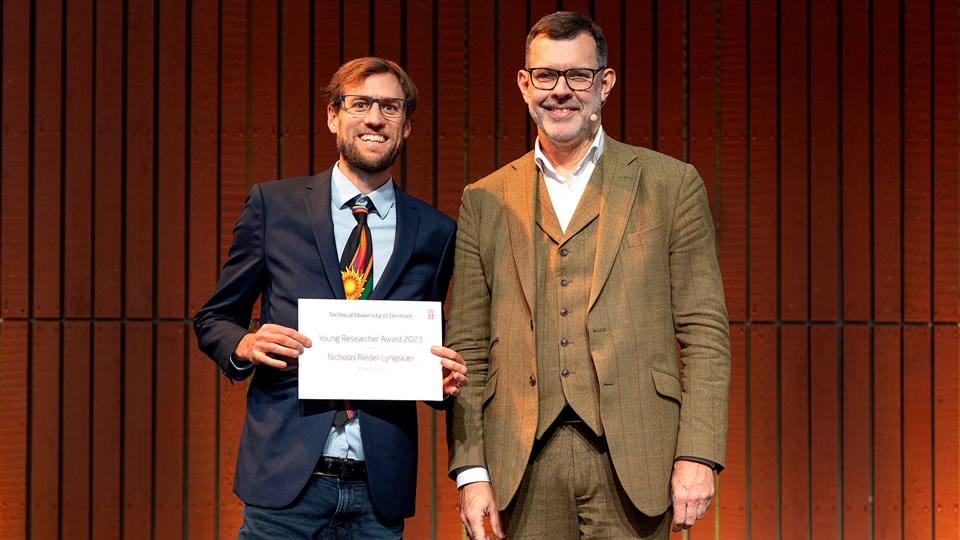Every year, DTU celebrates its PhD graduates at a festive reception, where the red carpet is rolled out, champagne is served, and prizes handed out by provost Rasmus Larsen.
Nicholas Riedel-Lyngskær received the award for his thesis "Characterization and modeling of bifacial photovoltaic modules and systems" supervised by associate professor Sergiu Spataru.
In demand
Bifacial solar cells produce electricity from sunlight received on both the front and backside.
Bifacial solar panels produce 5–10% more energy than conventional single sided solar panels, and are attractive to solar power developers that aim to maximize production within constricted land areas and minimize the levelized cost of energy. The market share of bifacial solar cells has grown from just 5% in 2017 to 65% at the end of 2022.
Despite recent rapid adoption of bifacial solar panels, the capacity of bifacial systems represents roughly 10% of global solar panel installations, most of which were deployed in the last three years.
The lack of long-term field experience with bifacial systems means that there are still open questions surrounding the accuracy of bifacial solar energy yield simulations, the best-practices for operation and maintenance, and how to optimize bifacial energy gains.
Valuable research to society
Riedel-Lyngskær improved bifacial energy modeling accuracy, and created a simplified method for rear irradiance measurement, resulting in a ~20 % increase of energy gains in large-scale bifacial systems.
Energy gain from bifacial PV systems is only considered bankable by investors if it can be accurately predicted.
Riedel-Lyngskær’s thesis contributes to the green transition by de-risking the use of bifacial photovoltaics in utility-scale projects.
The thesis was written in close collaboration with the Danish renewable energy project developer European Energy.
